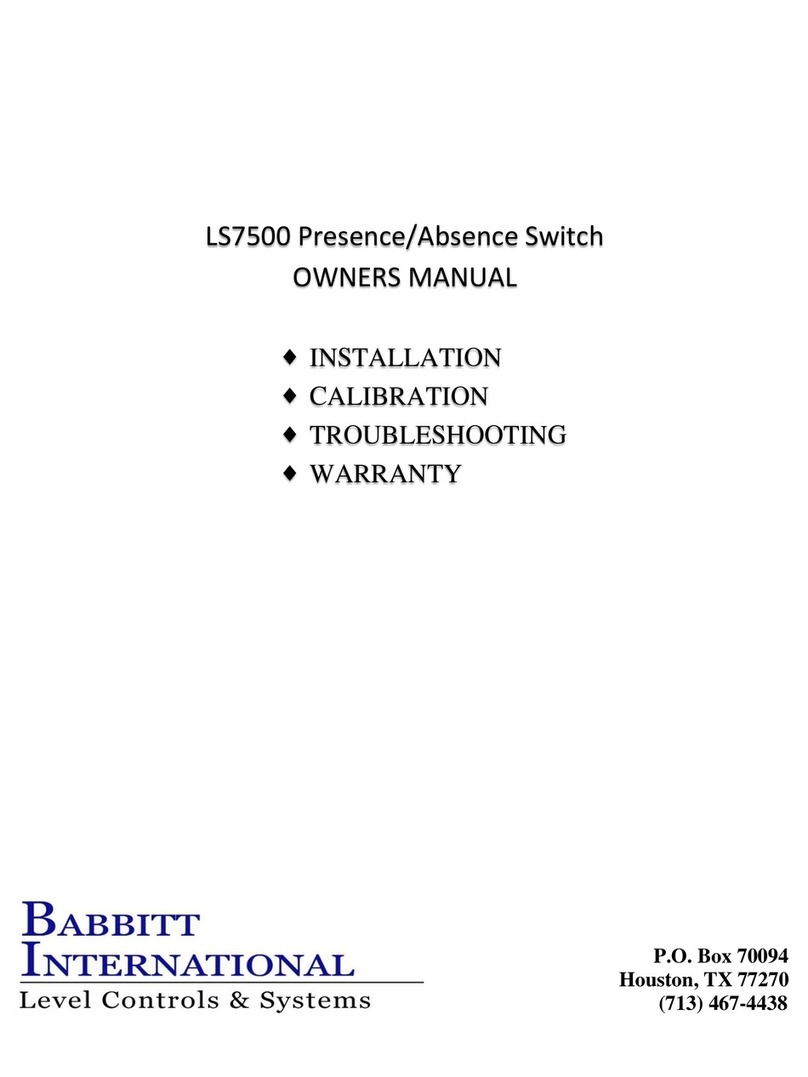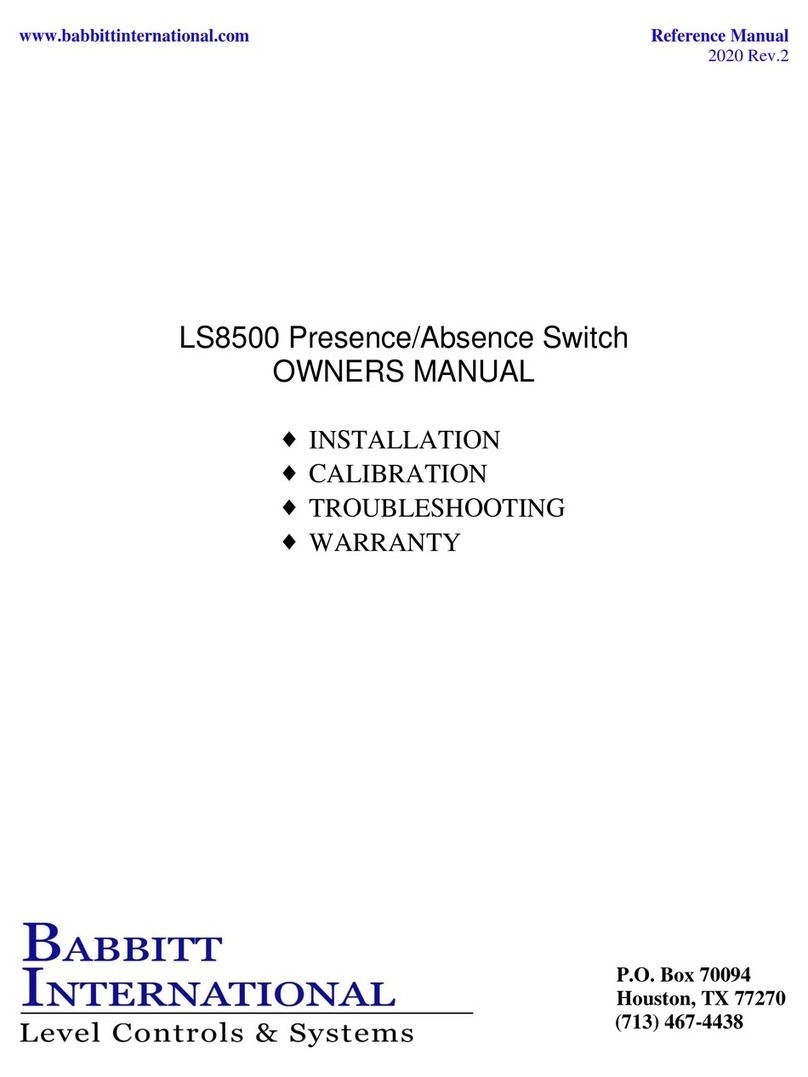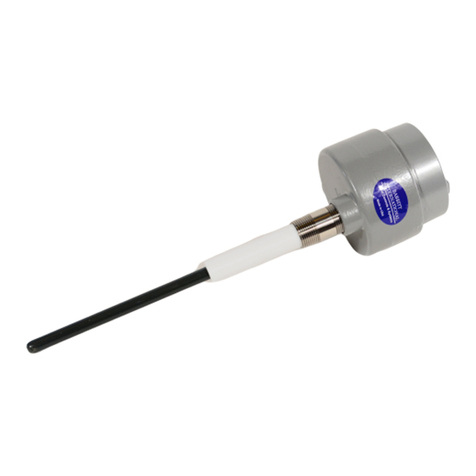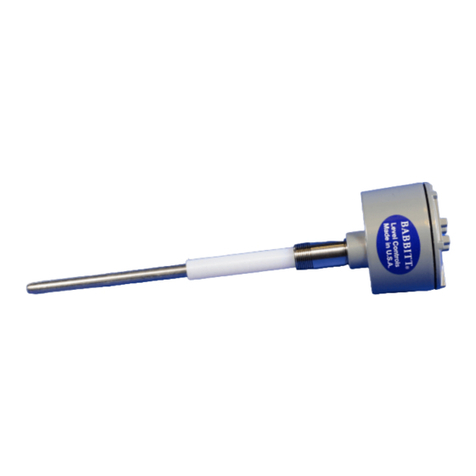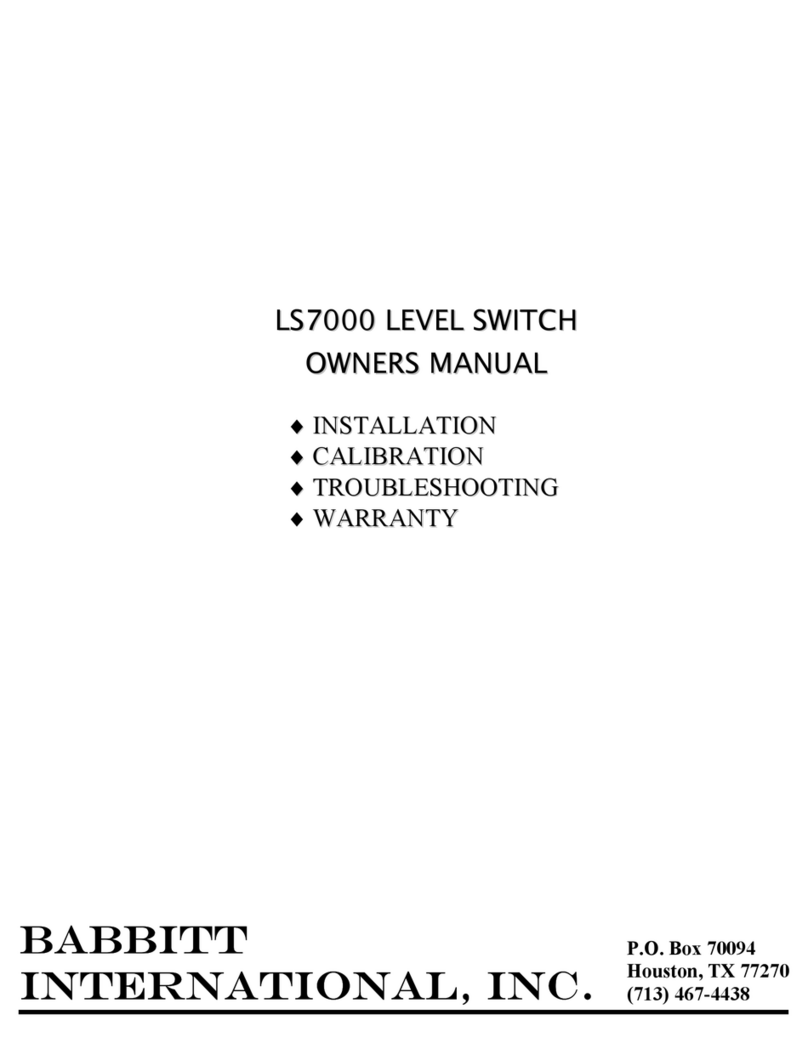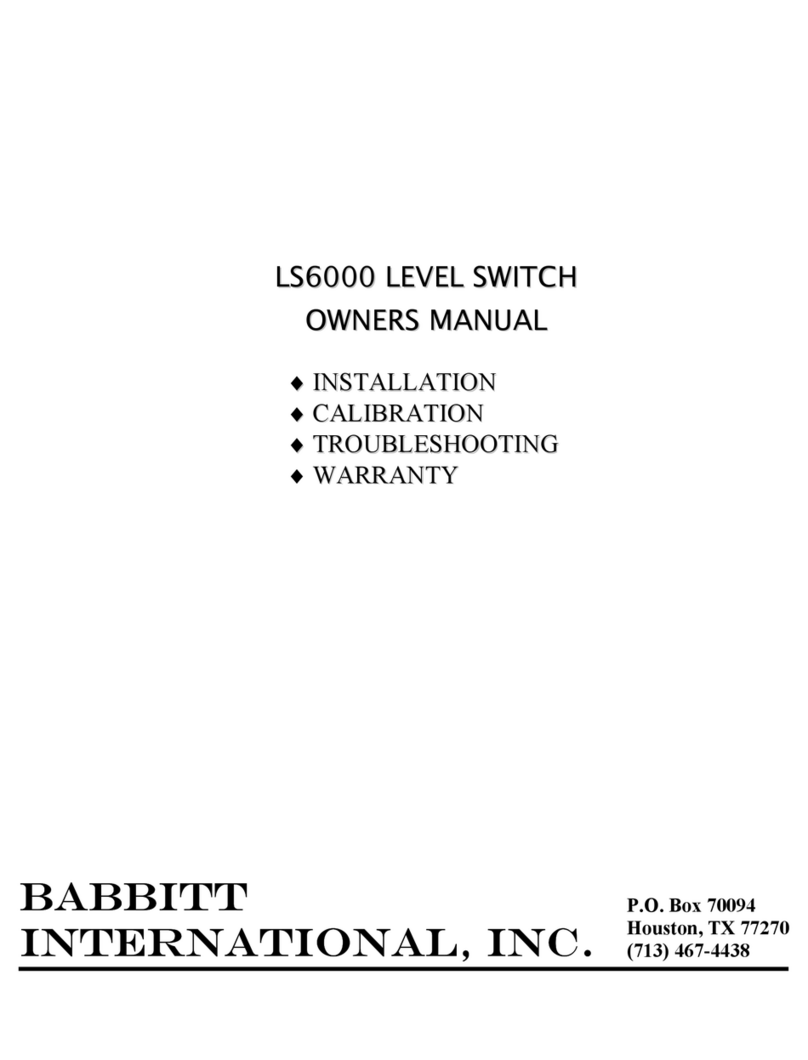
6) The LS8000 has a ¾” NPT conduit entry. When wiring these units, conform to the National Electrical
Code and any other city or company codes.
7) Always install the electrical connection into the ¾” NPT on the LS8000 so water will not follow the
connection routing into the threads of the ¾” NPT hub. To guarantee that condensation and water will stay
outside the unit, install an EYSM unilet before each LS8000 and fill with explosion proof sealing cement.
8) When required, the LS8000 probe can be bent to meet your special application. Remember to allow 2” of
clearance between the probe and the vessel wall. If the probe is to be used in a pressure application, the
factory must bend the probe to your specifications.
9) Location of probes on high level installations is more critical on dry material than liquids. Note the
following:
a) For dry materials, mount the LS8000 in the top of the vessel whenever possible. (This allows you to
lengthen the probe if necessary.)
b) Avoid mounting the LS8000 near the product inlet, vent return lines, dust collectors and vessel
discharge openings on dry materials. Turbulence around these areas can cause erratic detection unless
the probe is long enough. On old installations it might be wise to fill the vessel first to determine the
length or location of the probe. We recommend a 36” top mounted high level probe in storage silos
and a 24” in smaller vessels such as use bins.
CAUTION: Always take safety precautions before opening vessels for such
inspection.
c) On gravity filled vessels, take into consideration the angle of repose formed by the product.
d) On dry product that flows like water (starch), when using the LS8000 to stop the flow by means of a
butterfly valve or knifegate, make sure the probe is long enough to allow time to close these slow
moving valves.
e) In small vessels where a good location is hard to find, it may be necessary to put a baffle plate between
the probe and the product inlet to keep product off of the probe as it fills.
(A short time delay could also solve this problem.)
C. Installing the Receiver
The receiver is a printed circuit board measuring 3” x 4 ½“. It is mounted in a plastic snap track that is
provided with each unit.
The snap track can be mounted in existing control panels or enclosures may be ordered from the factory.
1) Attach the snap track to the panel back pan or other surface using 2 small screws or a suitable adhesive.
2) Snap the LS8000/R receiver card into the snap track.
3) Connect shielded cable to the 3 terminals marked G,S, +. (See page 5 for wiring diagram.)
4) Connect the proper supply voltage and relay output wiring for your application. (See page 4)
NOTE: All wiring must conform to the National Electric Code or other enforcing authorities that
apply in your area.
D. Typical Applications and Wiring Diagrams Follow:
3
